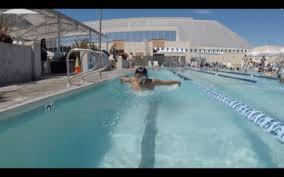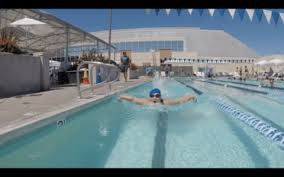Welcome back to Part III of our VLOG series on the Butterfly stroke. Last week, we discussed why the second kick in Butterfly is the MOST important. This week, we will discuss kick timing in Butterfly, and why your dolphin kick is really your metronome. Also, we will touch on the pulling pattern in Butterfly, along with some common errors seen within the stroke due to incorrect kick timing.
If you haven’t read last week’s post, be sure to check it out by [CLICKING HERE].
Otherwise, let’s get started…
As we said in Part I, Butterfly is a leg driven stroke. Up to 80% of the propulsion created in Fly can be generated from your legs! Basically, however fast you move your legs dictates how quickly your body and arms move. That is why it’s super important when you’re teaching young swimmers the Butterfly stroke that they get the correct timing of their kicks. It’s the propulsion created from the kick that helps get the arms through the recovery back into another propulsive phase. Without a strong dolphin kick, you’ll see all different types of arm recoveries, misaligned bodies, and “forced” Butterfly strokes.
As stated in Part II—“With each stroke in fly, swimmers get a kick at the top (when the hands enter the water, after they finish the recovery) and a second kick as the hands finish their pull—passing by their bellybuttons. It is the presence and intensity of the second kick that allows a swimmer to finish with a strong pull and have a “relaxed” recovery.”
As much as “we” (coaches) understand that paragraph on timing, it’s really important that we convey that correct timing in Butterfly to our swimmers so they can understand.
Next time you’re at practice, get your swimmers out of the water and run through this Butterfly Kick Timing Drill:
- Get all your swimmers out of the pool and standing side by side–facing you.
- Have them all bend at their hips, so their eyes and chest are facing the ground.
- From there, have them put their hands above their head (keeping each thumb right outside its’ respective shoulder joint).
- Now, have them tilt their fingers towards the ground (mimicking the hands entering up top at the end of the recovery). Their palms should be down and their middle finger on both hands should be entering first. This is your starting position.
- Once their in that starting position position, tell them to perform their first dolphin kick.
- Once that first dolphin kick is completed, have them initiate their pull down towards their hips (keeping their thumbs right outside their body) and performing a second kick when their hands pass by their belly button. Make sure they continue to finish their pull, after the second kick as been performed.
- Once they’ve completed the pull, tell them to perform an above-water recovery getting their hands back to the starting position or Step 4—continuing with the first dolphin kick.
- Steps 4-8* can be completed with the addition of a breath during Step 6. The breath in Fly always happen as the hands are pulling down. Remember: the chest rises as the hands are pulling down, and the chest lowers while the arms are recovering.
This Butterfly Timing Drill is a great way for swimmers to understand that the kick, pull, and breath are all interconnected. If any of these three aspects are initiated outside of its’ sequence—the whole stroke rhythm falls apart.
Common Kicking Timing Errors Seen in Butterfly:
The Clawer & The Late Breather
1.) The Clawer is defined as the swimmer who has to “muscle” through their recovery, because a second kick is not performed AND/OR they come up way too high during their breath and are diving down to recover from that huge up-lift.

2.) The Late Breather is defined as the swimmer who has a second kick, but it happens when the hands are finishing the pull (down by the hips) versus at the belly button. This causes the head to come up and breathe while the second kick is happening and the hands are transitioning from the pull into the recovery.

Want to learn how to identify these common errors?
As you can see from the video, the timing of your kick plays a HUGE role in the rhythm of your Butterfly stroke. With incorrect kick timing, it’s virtually impossible to swim an “easy” Fly. That is why a a consistent and constant dolphin kick is the secret to a faster Butterfly stroke.
Until Next Time,
Abbie Fish

4 Responses
100100100
Excellent 100